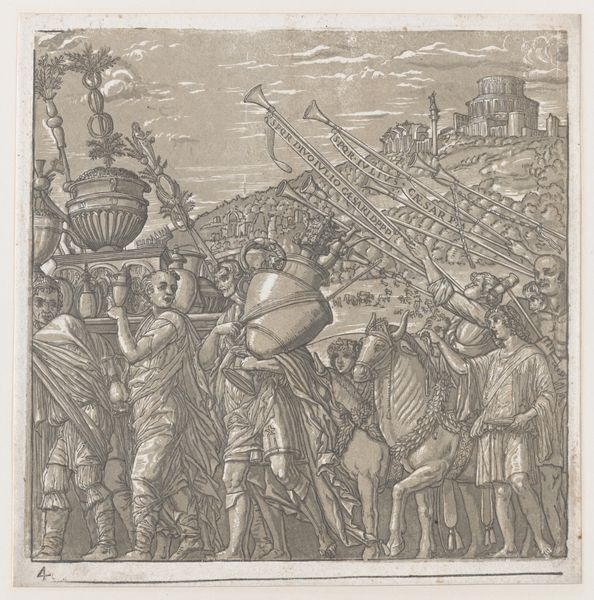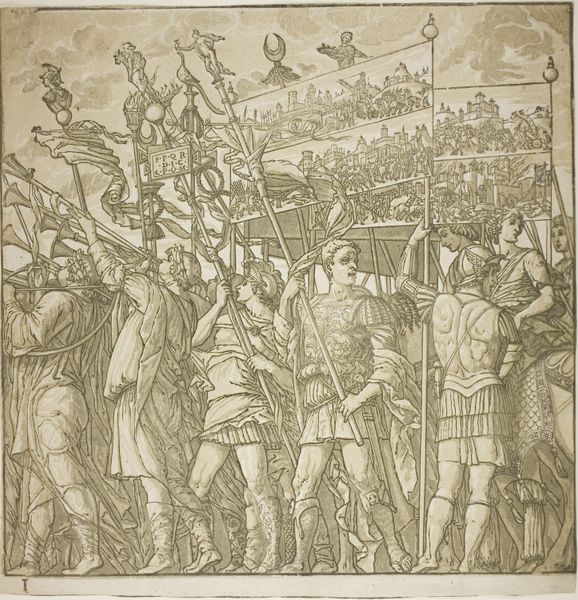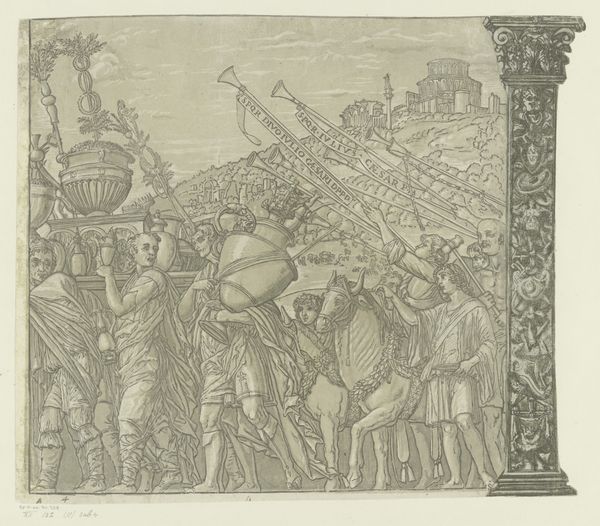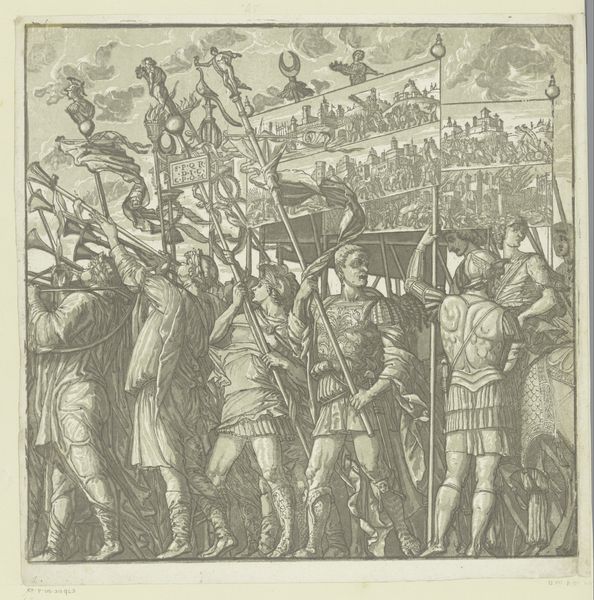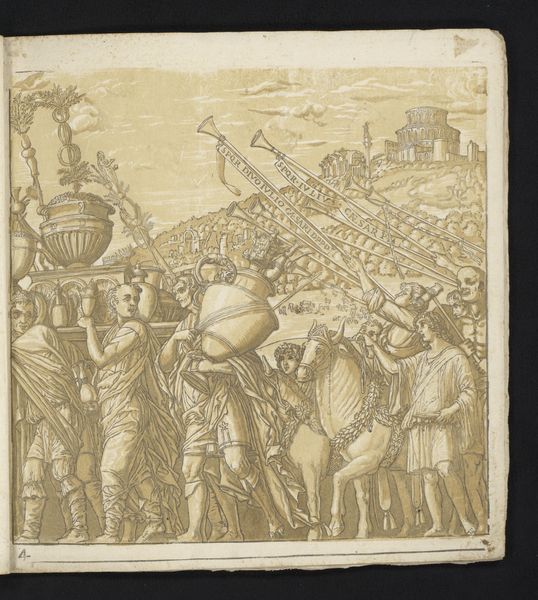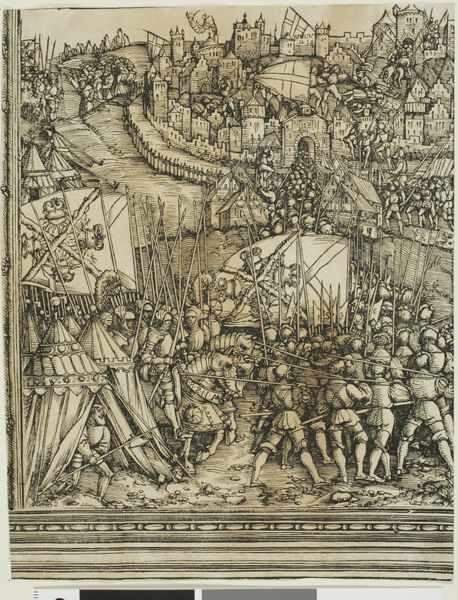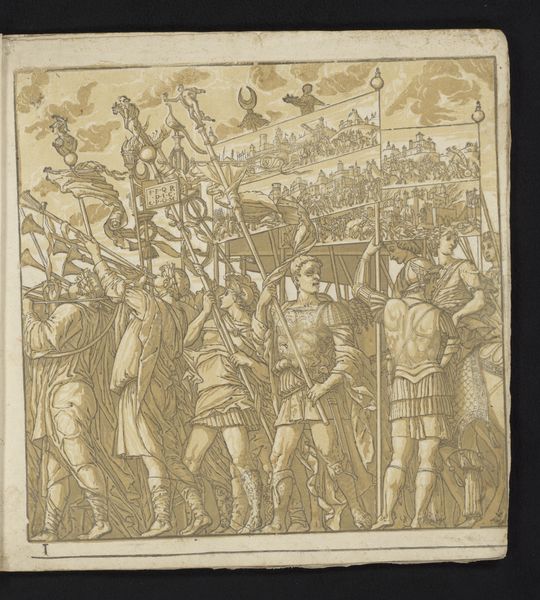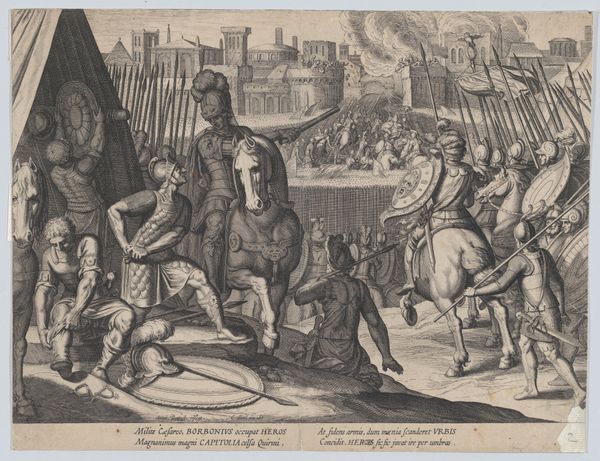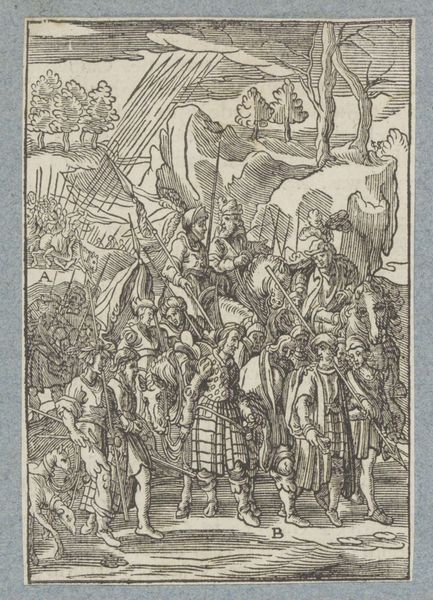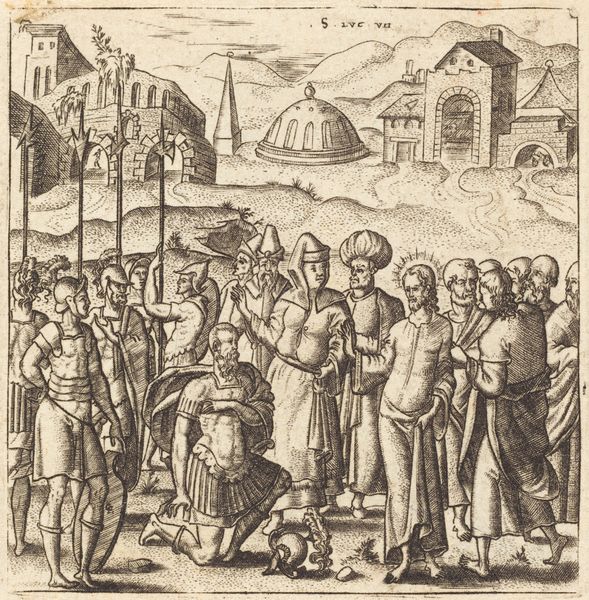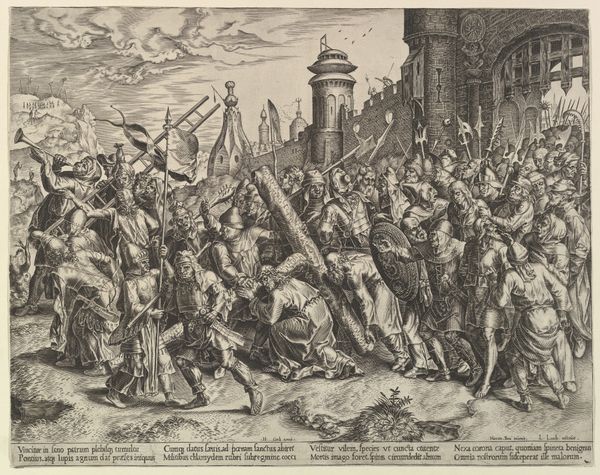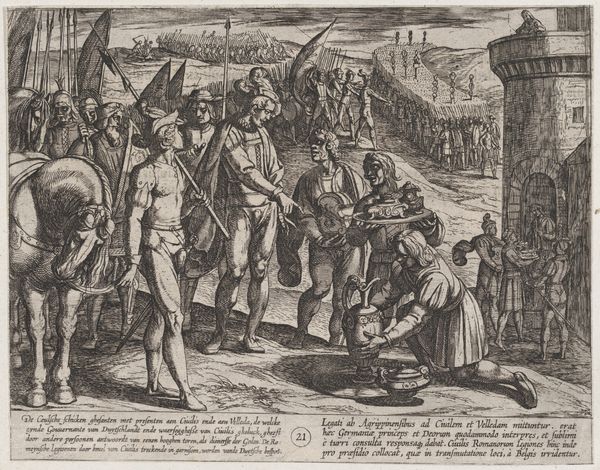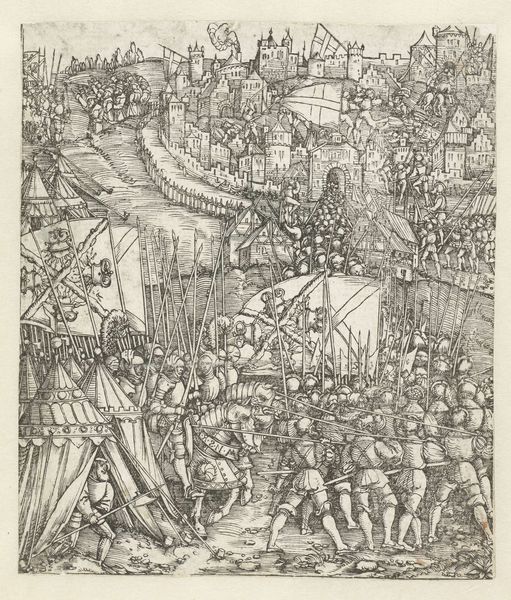
print, paper, engraving
#
toned paper
#
allegory
# print
#
mannerism
#
paper
#
11_renaissance
#
geometric
#
history-painting
#
engraving
Dimensions: 380 × 378 mm (image/sheet); composite approx. 385 × 3420 mm
Copyright: Public Domain
Andrea Andreani created this woodcut, Triumph of Caesar, around 1598. It depicts a procession of Roman soldiers with spoils of war. Note the recurring motif of triumphal arches and laurel wreaths adorning the figures and horses. Since ancient times, the arch represents victory and imperial power, while the wreath symbolizes honor. Consider the use of similar motifs in Renaissance paintings, where rulers were depicted wearing laurel crowns to connect their reign with the glory of Rome. The collective memory of ancient Rome, filtered through Renaissance ideals, surfaces here. The image conveys intense feelings of glory and power. This fascination with the past highlights the Renaissance artists’ deep, subconscious desire to recapture the grandeur of antiquity. The image has an appeal that transcends time. Motifs resurface, evolve, and take on new meanings in different historical contexts. They echo through time, influencing our visual vocabulary.
Comments
No comments
Be the first to comment and join the conversation on the ultimate creative platform.
